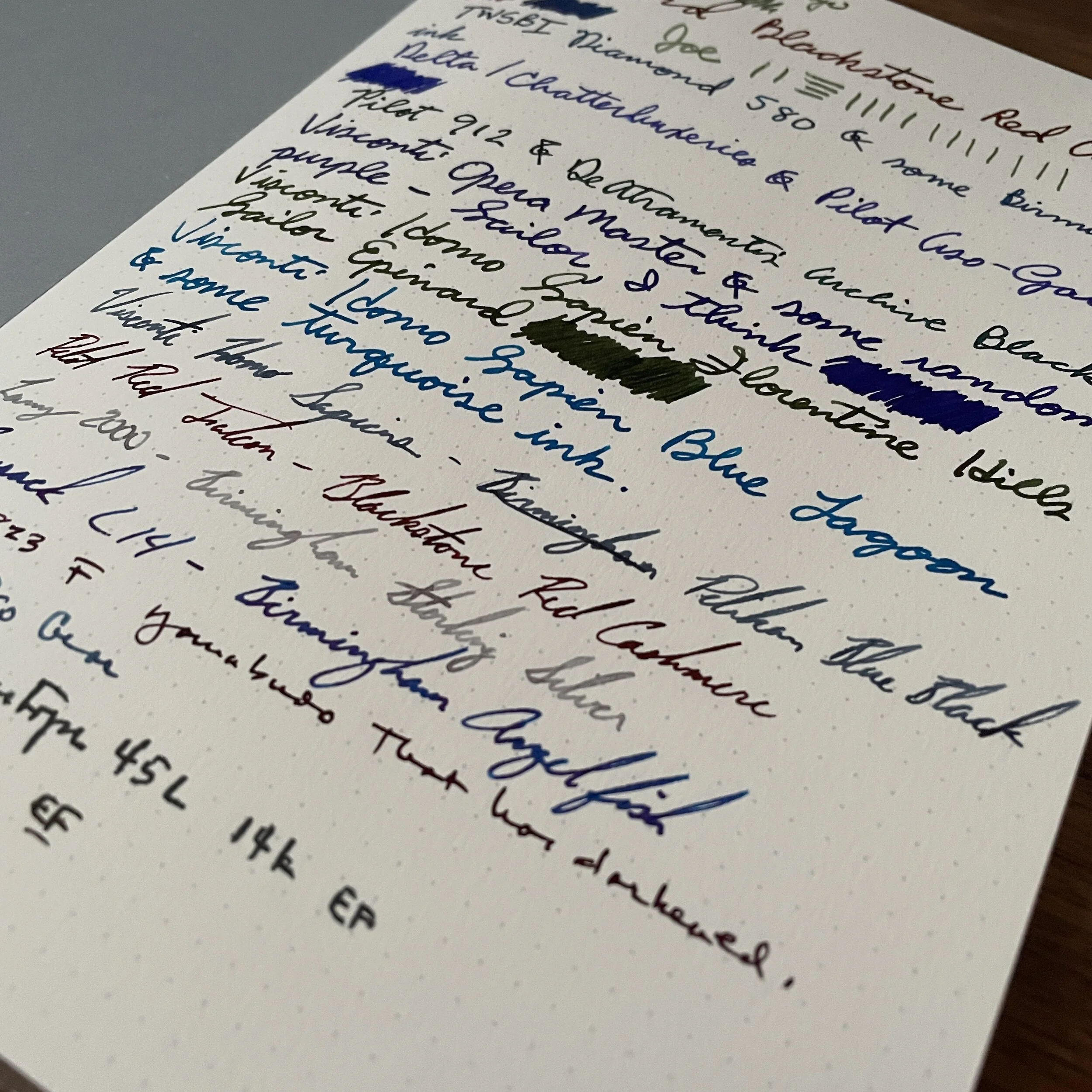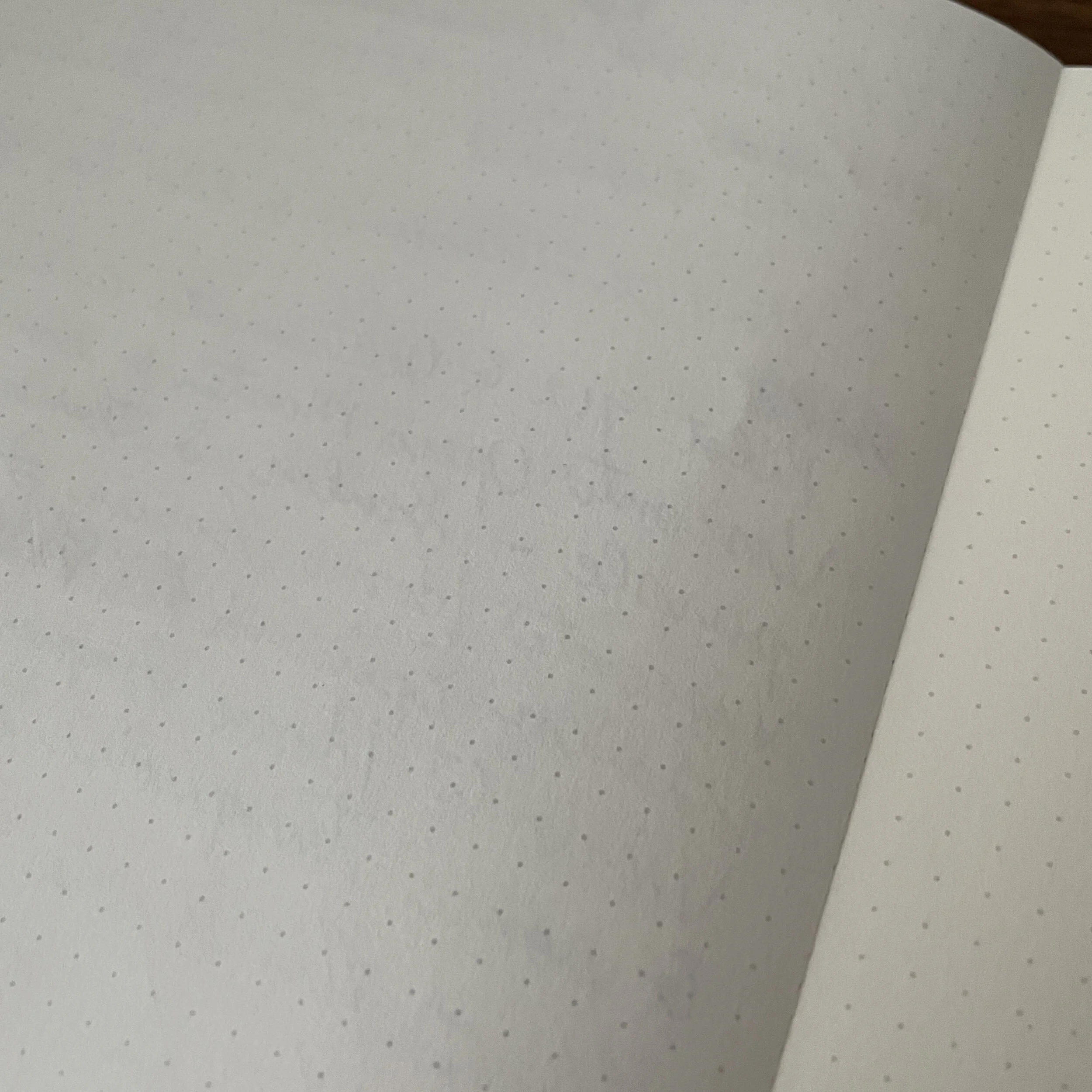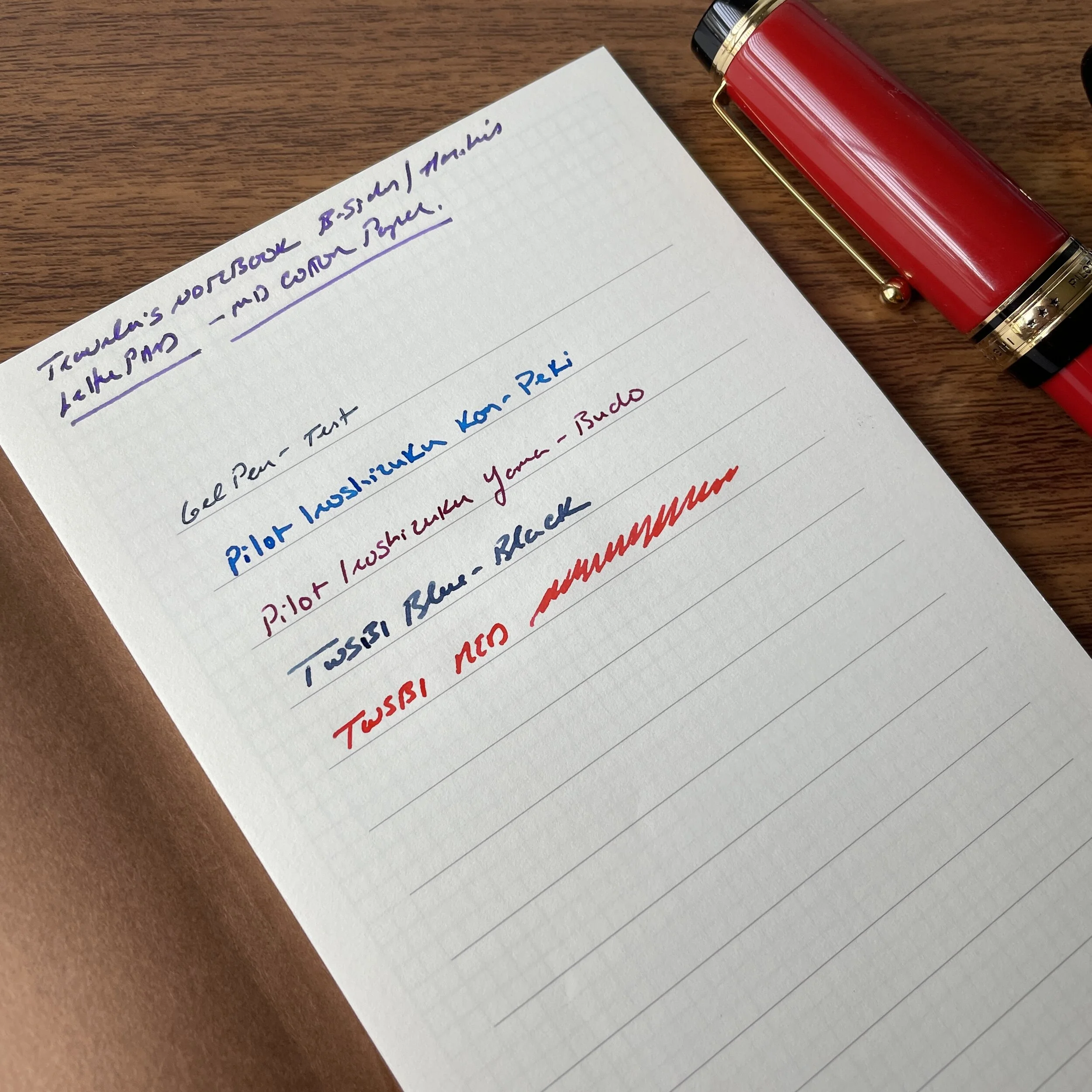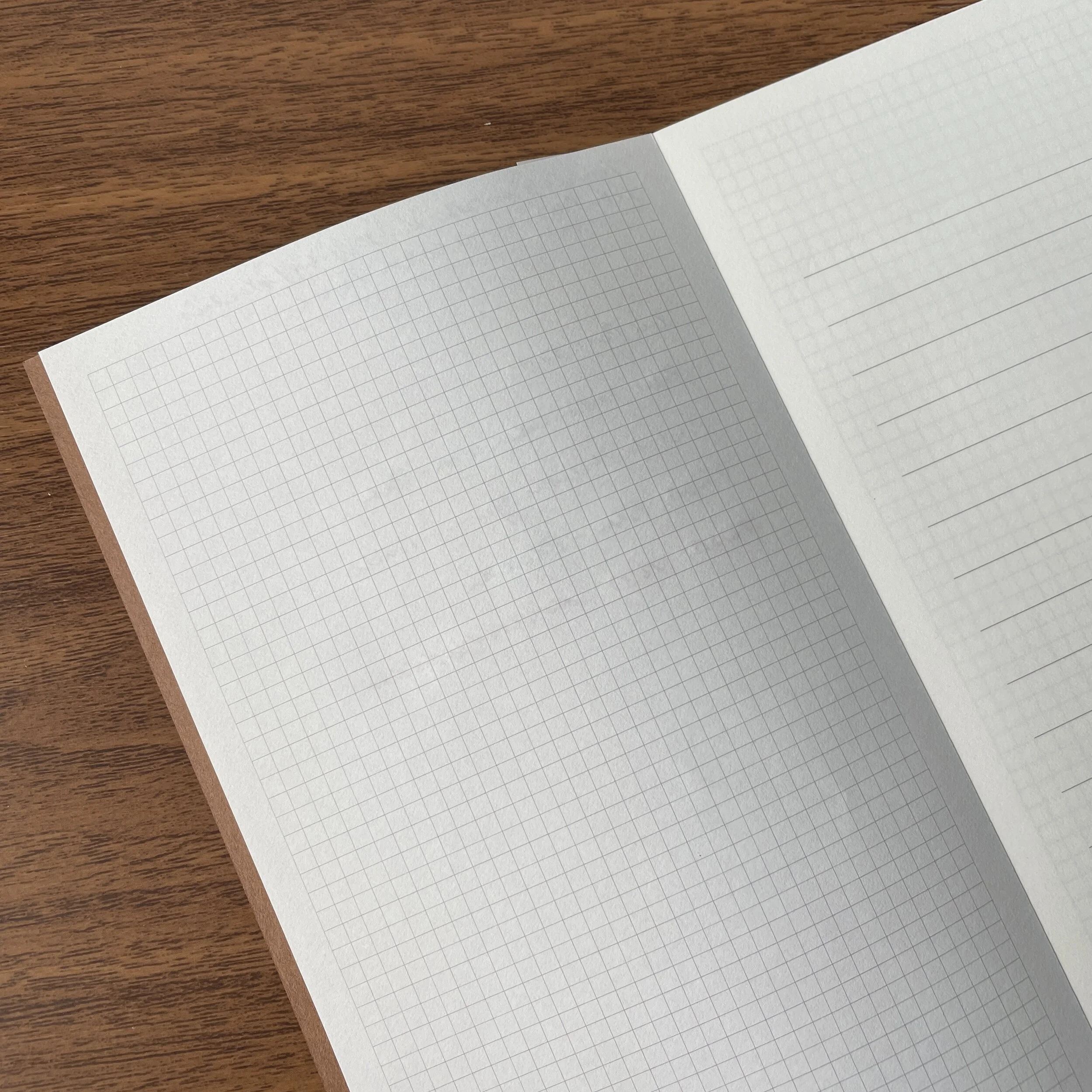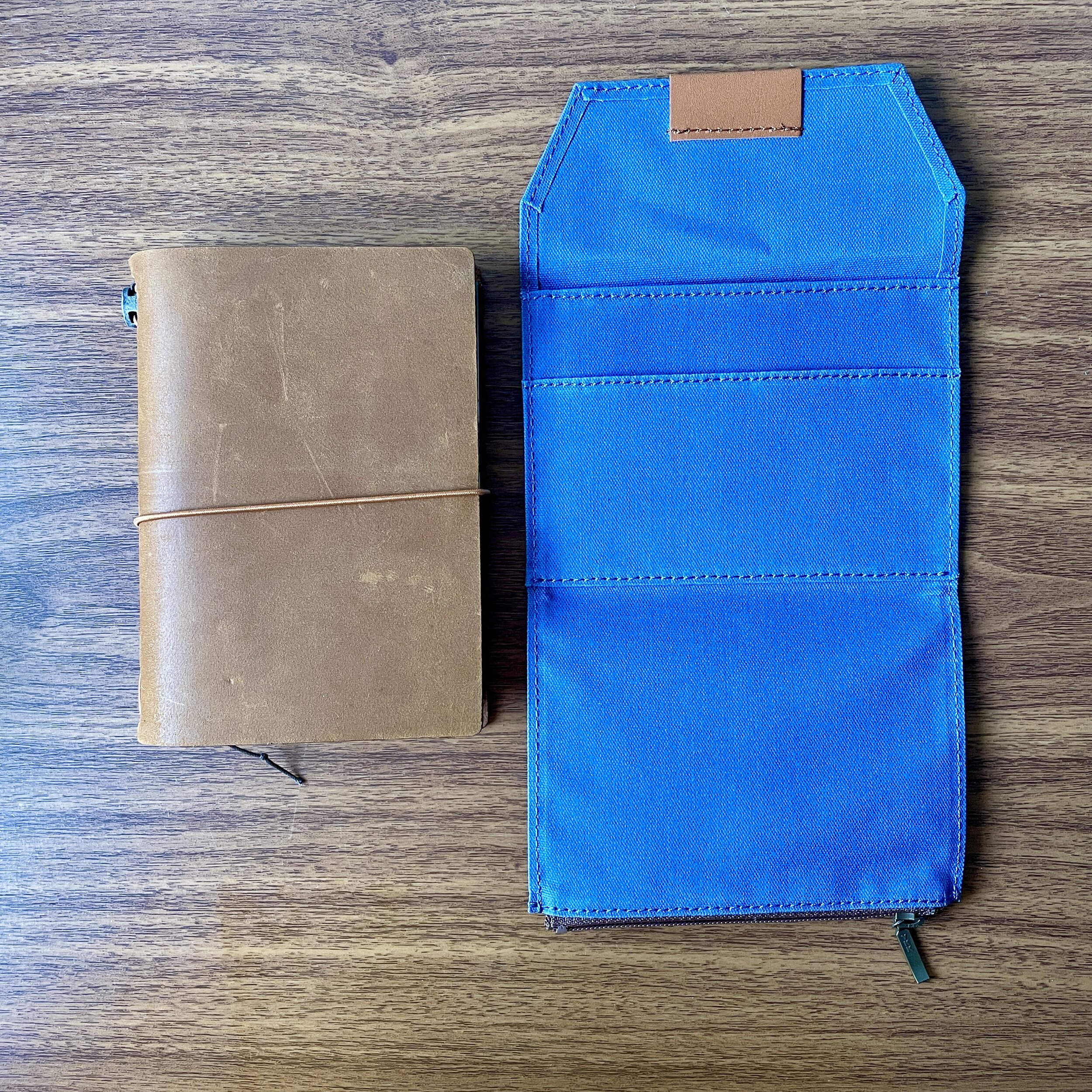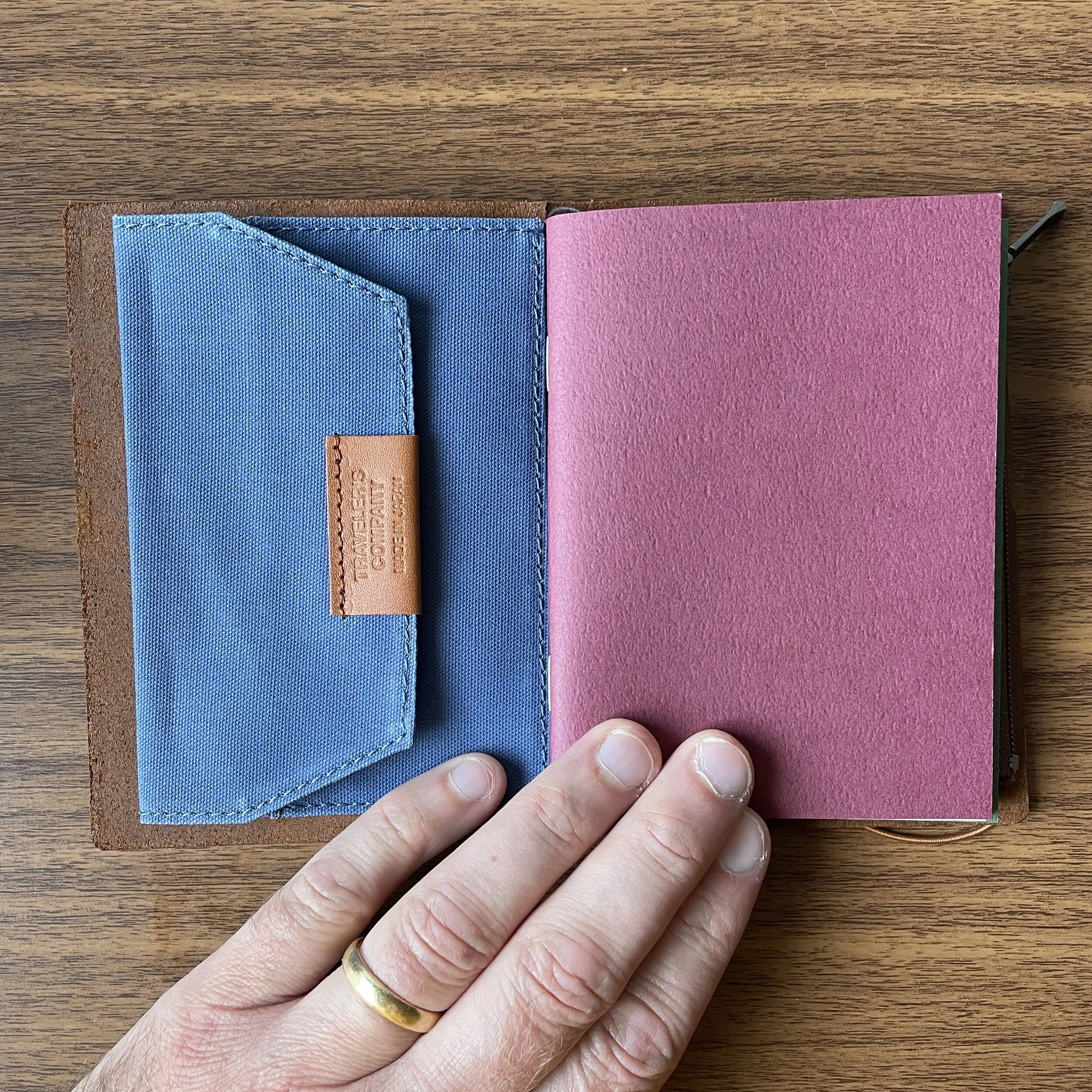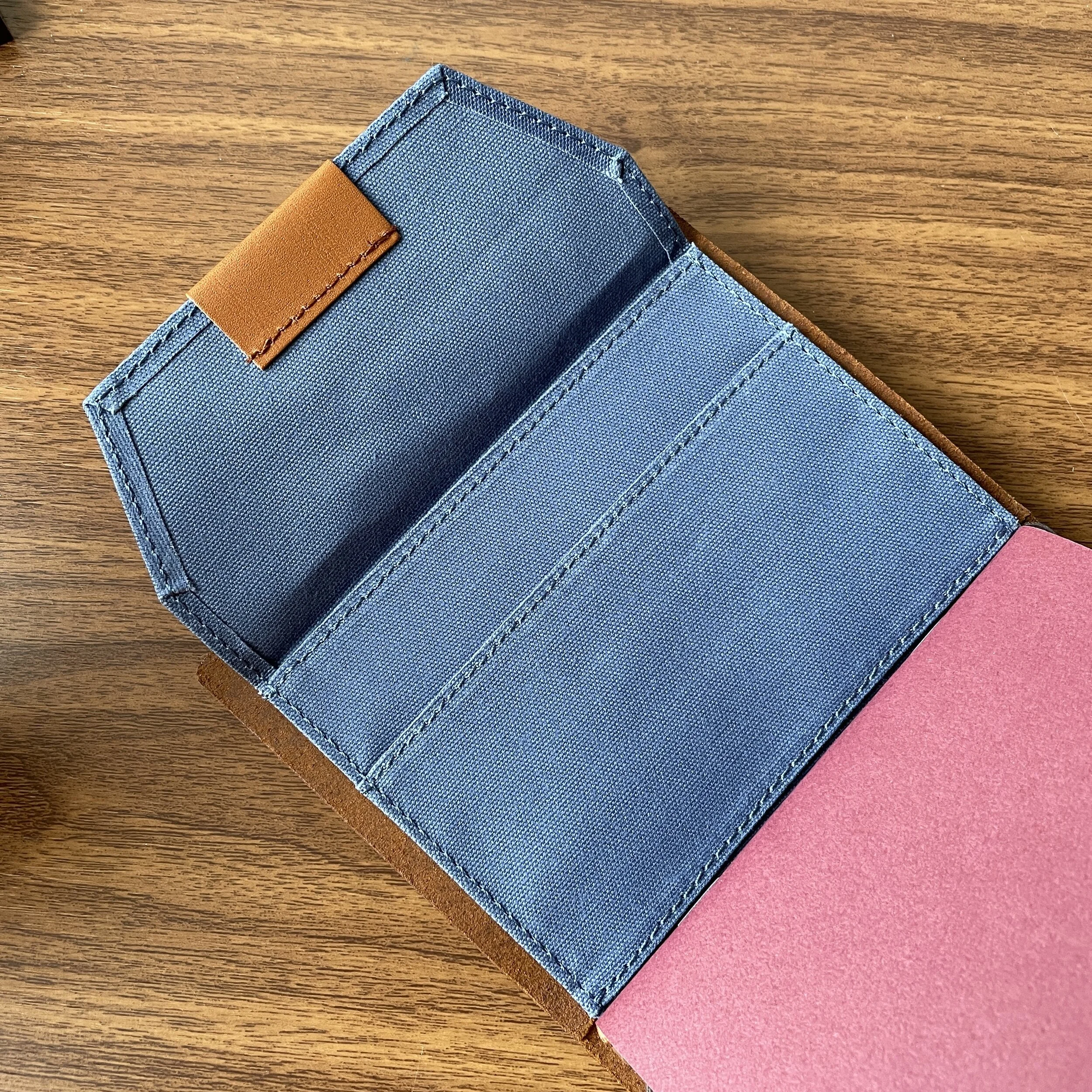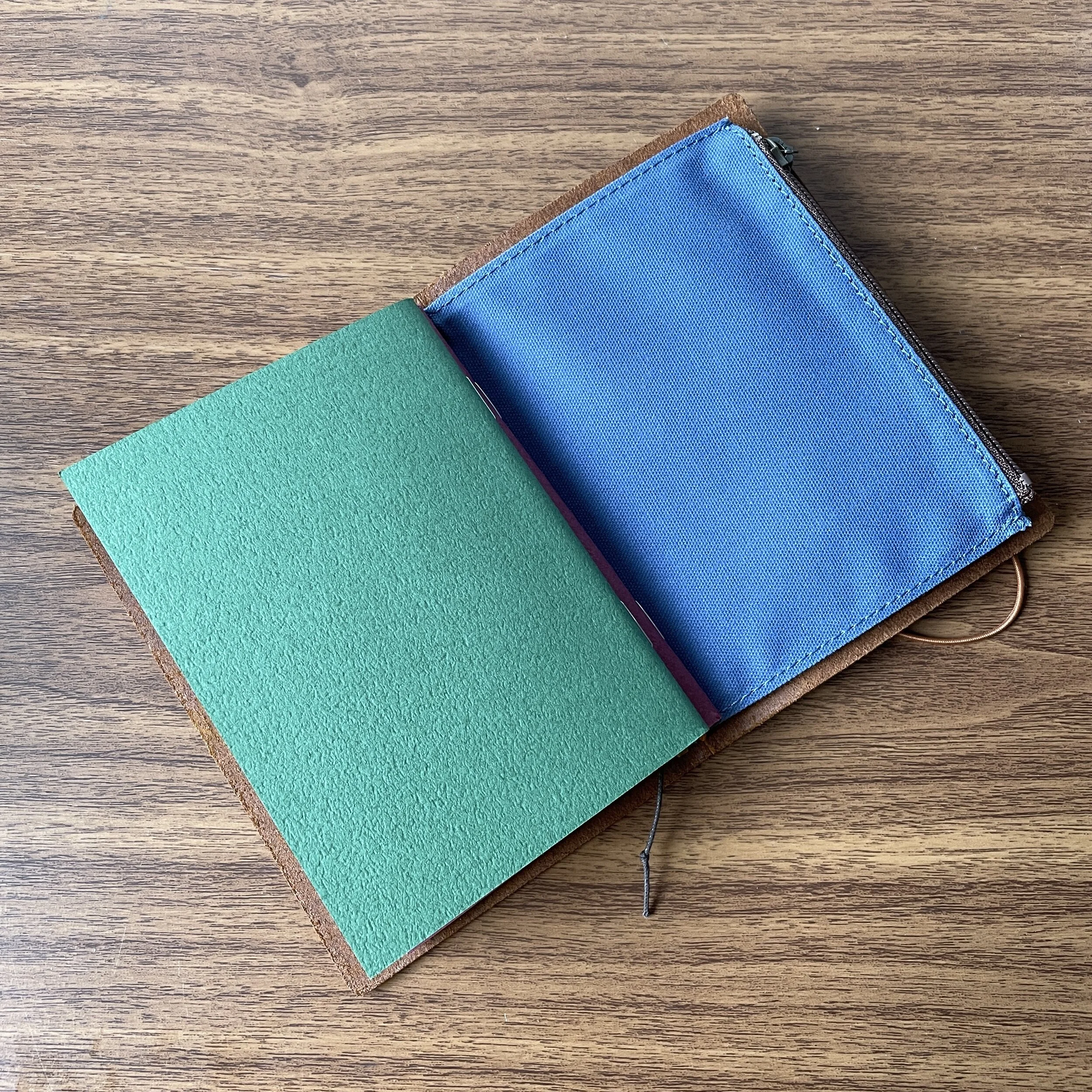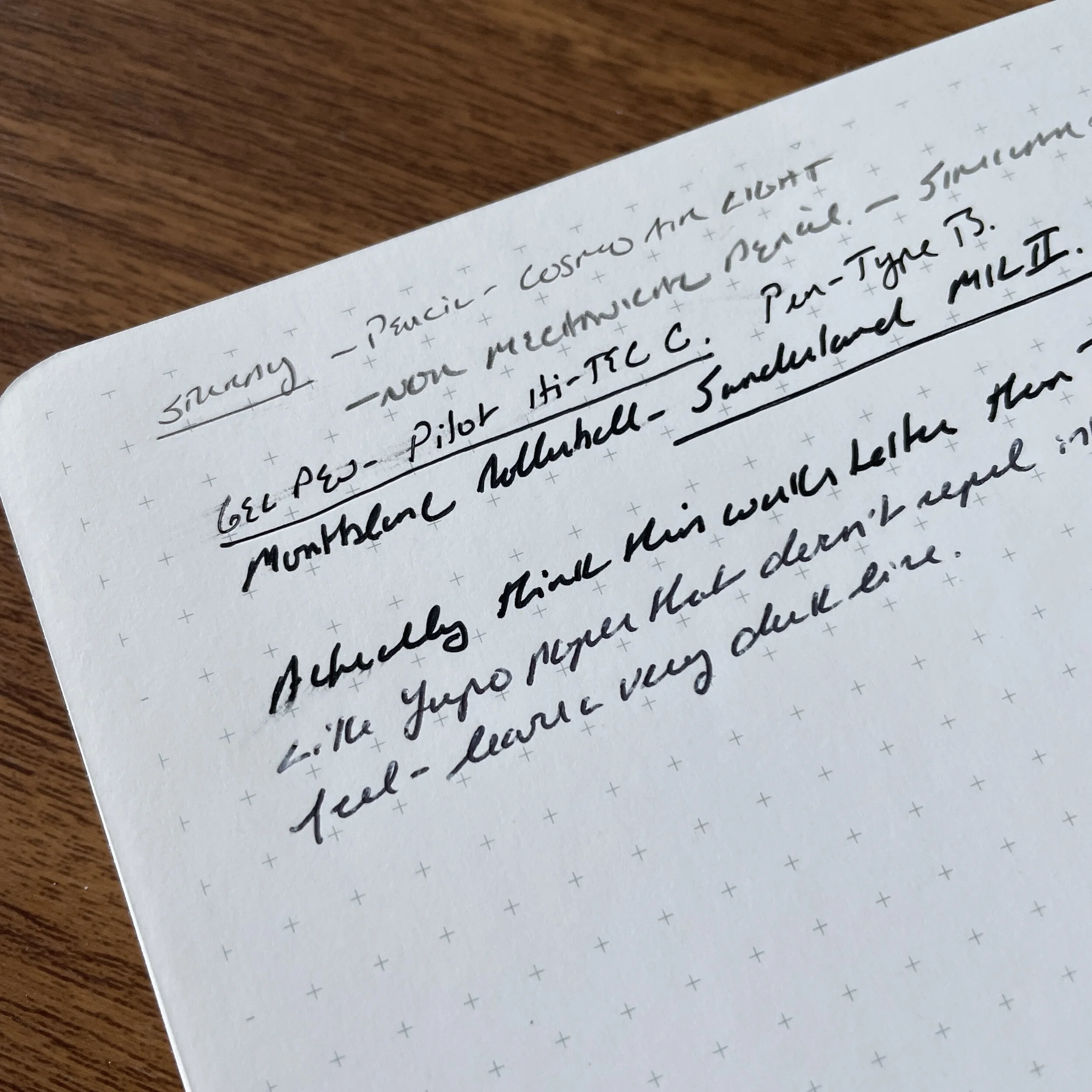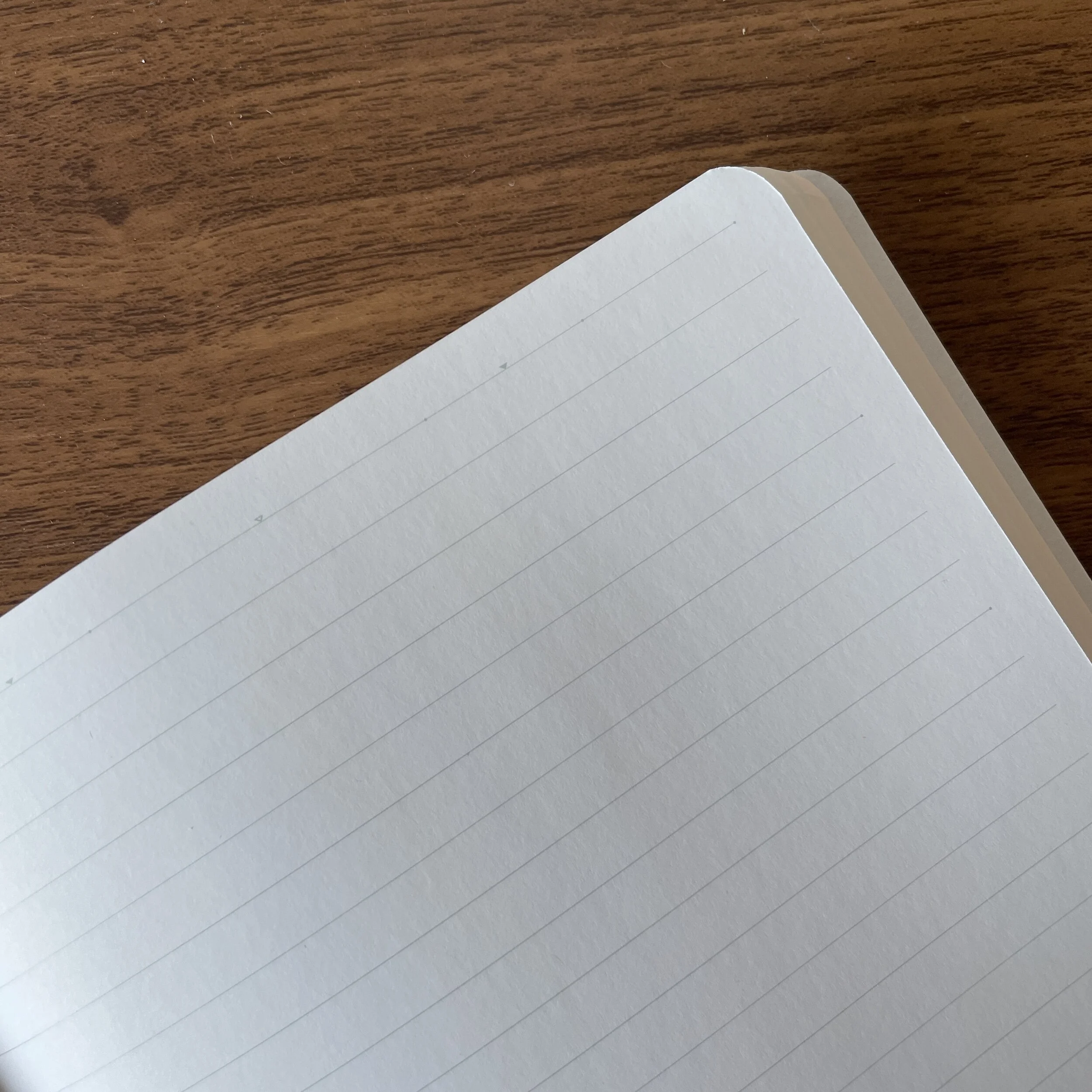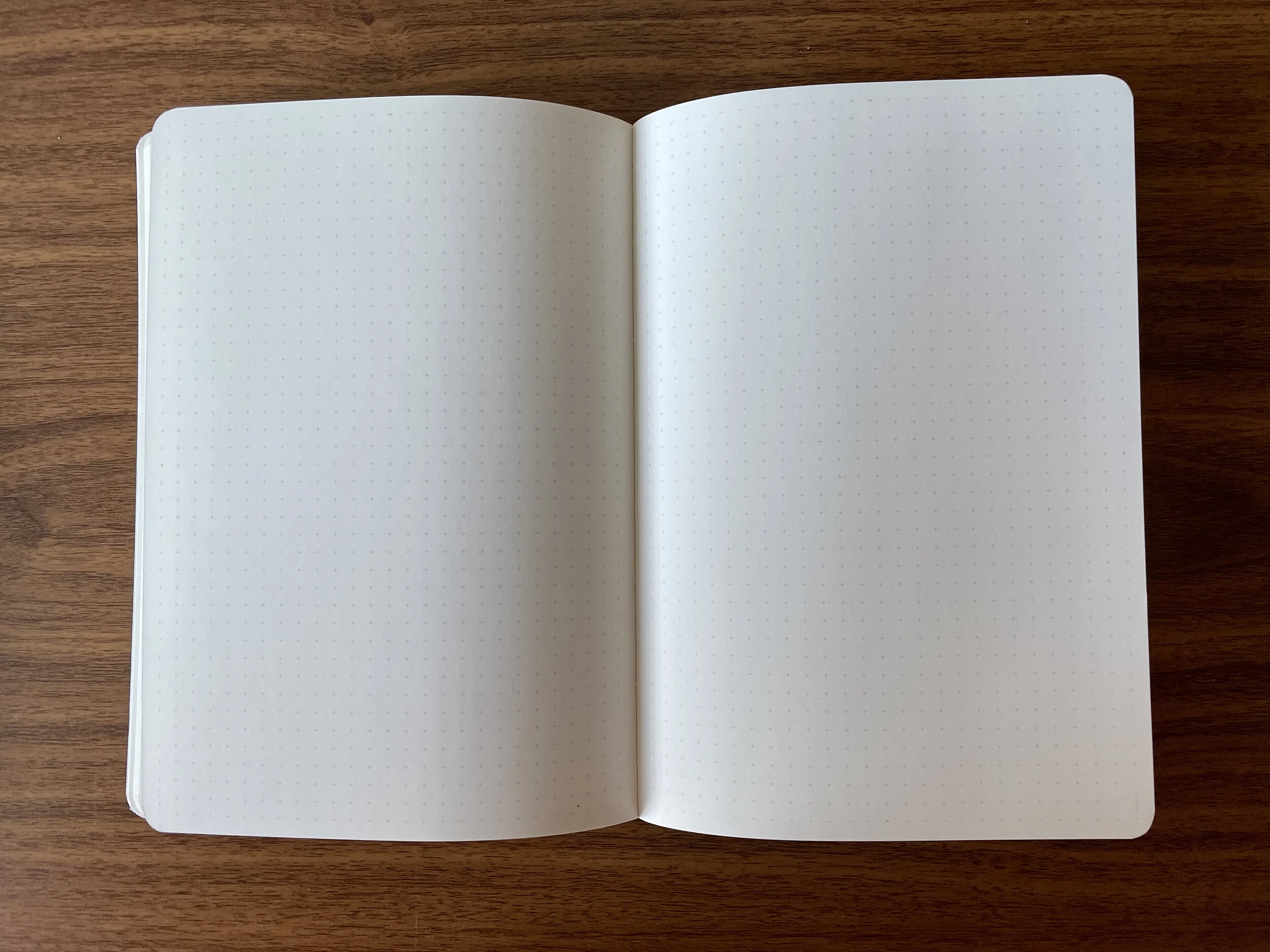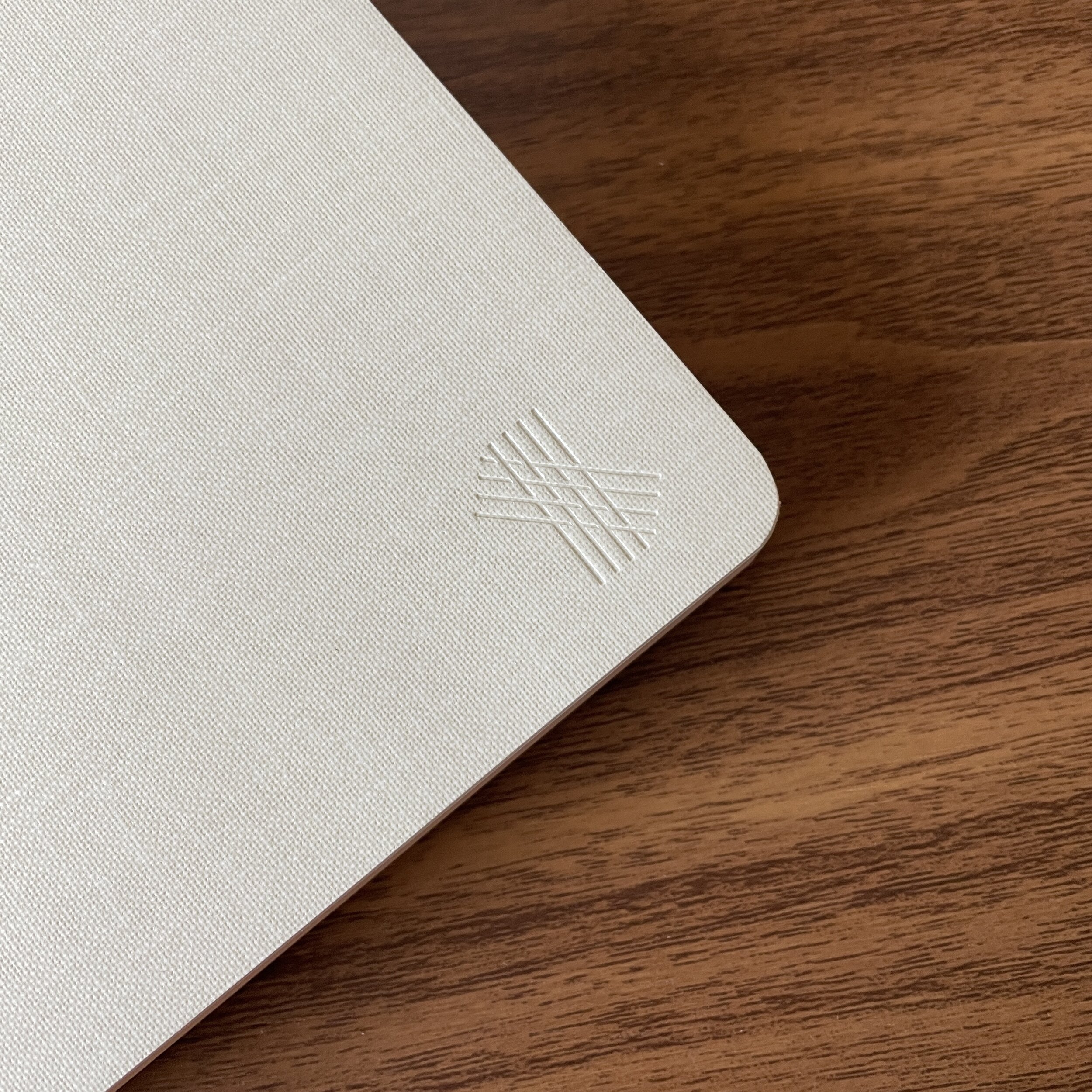Ok, I’ll get this out of the way first. What’s behind the naming convention here? According to Kokuyo, “PERPANEP” is an anagram of “Pen” and “Paper,” designed to reflect the new product’s emphasis on paper feel in addition to writing performance. Kokuyo is one of the largest Japanese stationery manufacturers, and already has a broad lineup of paper. PERPANEP looks like an attempt to target the higher end of the market with high quality paper that offers multiple options for both paper texture and ruling.
You’ll have no issues getting the PERPANEP notebooks to lie flat.
Kokuyo PERPANEP products are quite understated, taking a page from the Midori design book. The notebooks feature grey covers with a white cheesecloth binding, and hold 60 pages/120 sheets of slightly off-white 75gsm paper. Functionally, these notebooks are straightforward workhorse stationery, featuring excellent quality paper, a flexible binding that allows the notebook to open completely flat, and five different rulings. It’s a versatile product, as you can choose from .4mm dot, .3mm grid, .4mm grid, .5mm grid, and a .6mm steno ruling.
While PERPANEP paper comes in three different paper variations - smooth, ultra smooth, and textured, I decided to stock just the textured (“Zara Zara”) because it was, for me, the only version that performed consistently well with fountain pens, meaning that it had zero feathering or bleed through. I brought one of these notebooks to the last meeting of the Middle Tennessee Fountain Pen Club last week, and we could not get this paper to feather or bleed even with our wettest writers. I would compare the paper feel to Fabriano or Baron Fig in terms of texture, but the performance to Midori. It’s that good. Dry time is pretty decent (10-15 seconds with the inks I tried).
All five ruling options.
Kokuyo PERPANEP Paper is currently available for purchase in the T.G.S. Curated Shop, priced at $14. If you’re interested in reading further on fountain pen friendly paper, check out this brief guide to the “hierarchies” of paper, which I try to keep updated as I discover and review additional brands.
The T.G.S. Curated Shop is an authorized retailer of all brands we carry, including Kokuyo.

